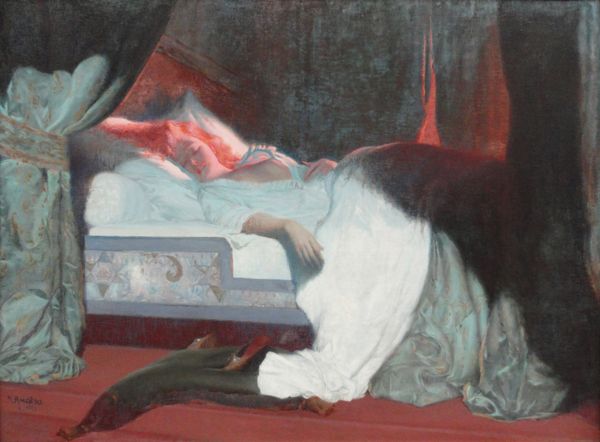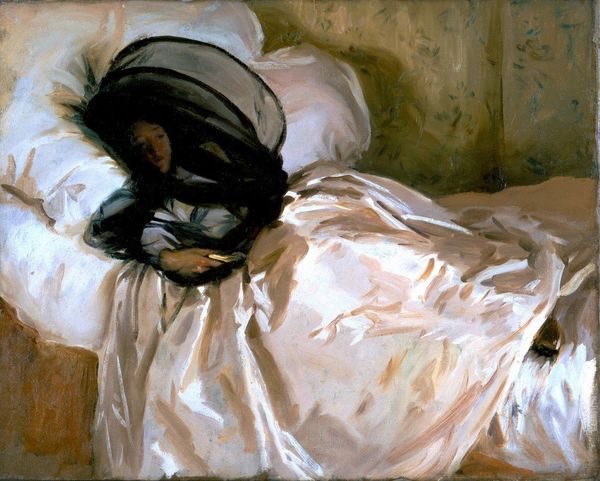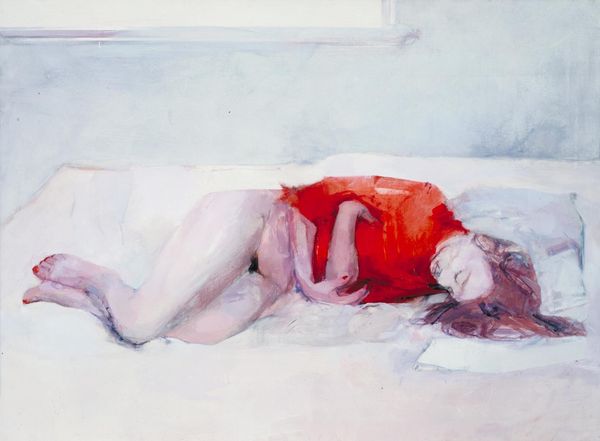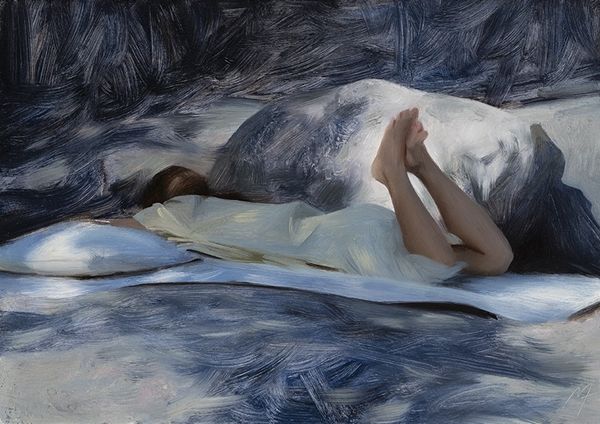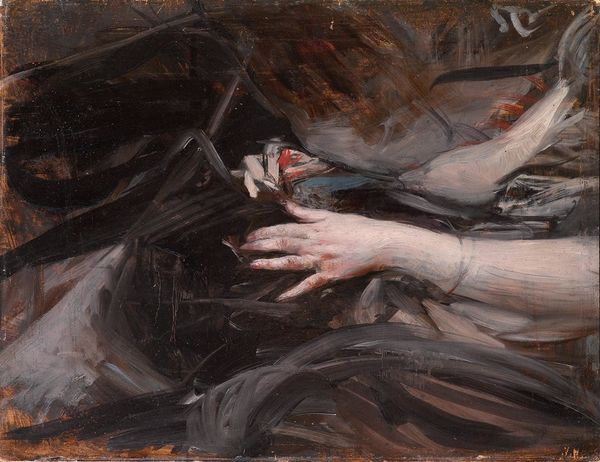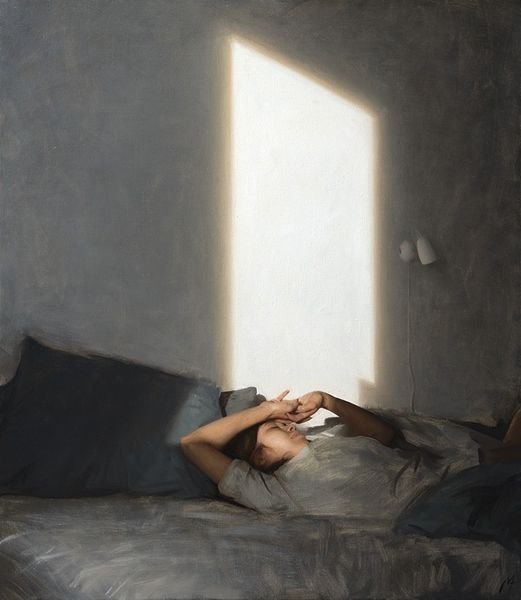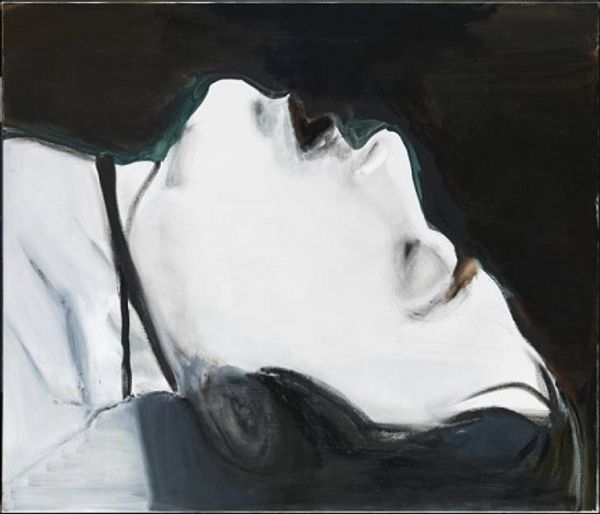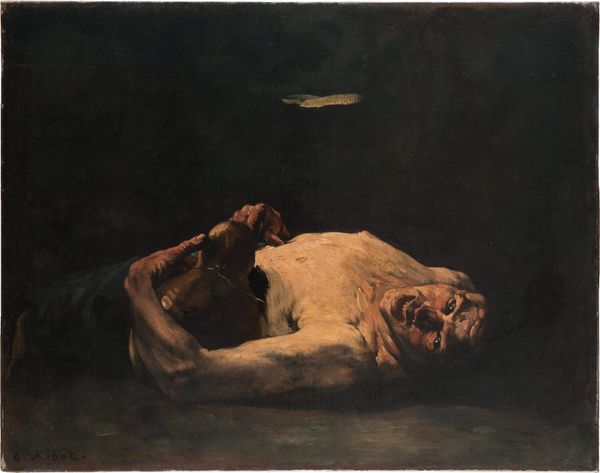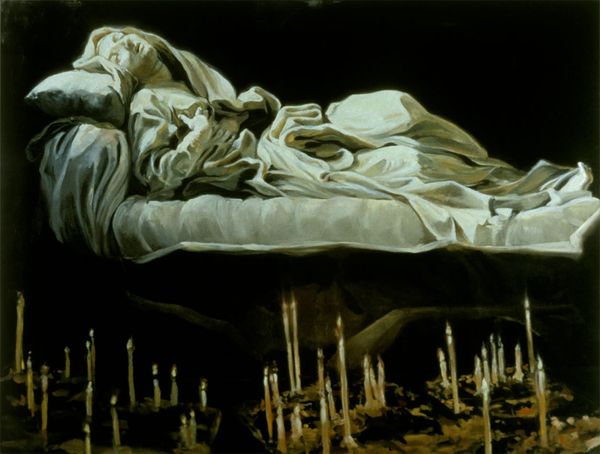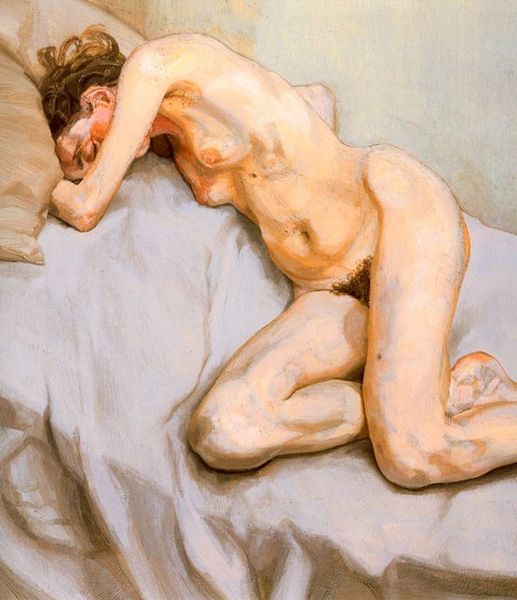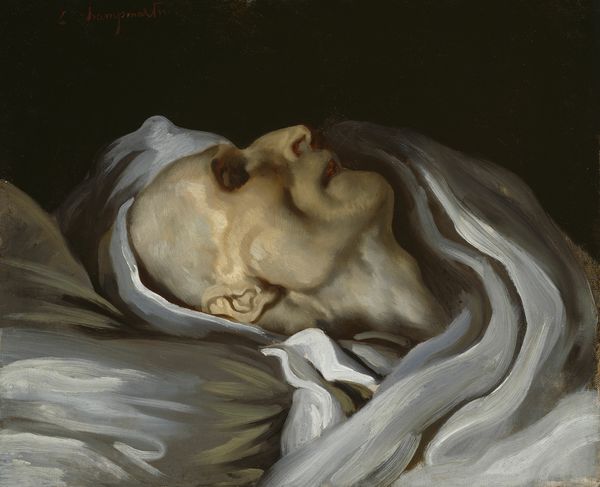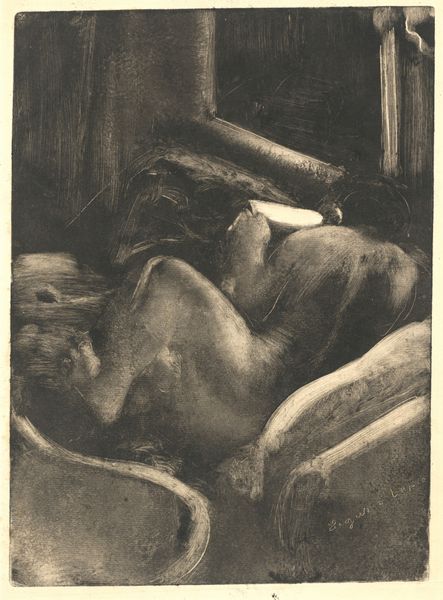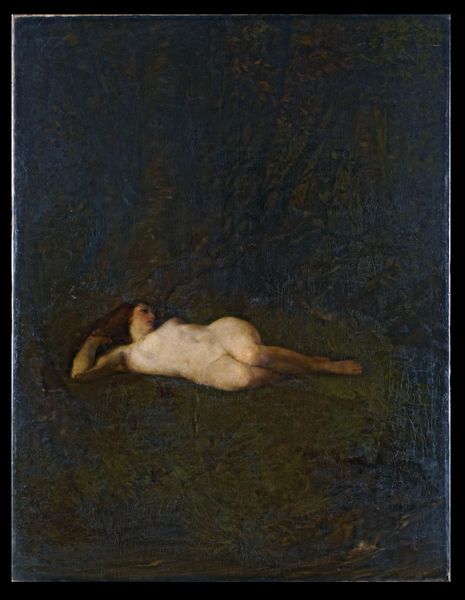
drawing, charcoal
#
portrait
#
drawing
#
charcoal drawing
#
figuration
#
neo expressionist
#
expressionism
#
portrait drawing
#
charcoal
#
charcoal
#
monochrome
Copyright: Modern Artists: Artvee
Editor: Here we have Iwo Zaniewski's charcoal drawing "Kryska in Bed." There’s such stark contrast in this piece, with most of the scene fading into shadow except for the white bedding. What kind of statement do you think Zaniewski is making here? Curator: This piece, with its deep shadows and focus on domestic intimacy, feels almost voyeuristic. What I find intriguing is thinking about who 'Kryska' might be and the public's relationship with her private life, particularly if she's a known figure. Does that change the way we perceive the art? Editor: It could certainly alter the reading of the work. Knowing about Zaniewski and his subject changes the level of curiosity surrounding the image. Are we, as viewers, meant to feel like intruders? Curator: Precisely! And what if this was commissioned? Think about the power dynamics at play. Was it meant as a celebration, an exploitation, or something else entirely? These choices, and the story behind them, shape its meaning just as much as the charcoal on paper. Editor: That makes me wonder about how the art world perceives "private" moments. Is there a historical precedent for this sort of intimate portrayal, and how has it evolved? Curator: Absolutely. Consider the Old Masters' depictions of reclining nudes, often idealized. Here, Zaniewski strips away that idealization, presenting something more raw, perhaps even vulnerable. We've seen a shift in artistic intention from glorification to more honest representations. Editor: So the political or social statement isn't just about the subject, but also about challenging how we, the audience, consume images of people? Curator: Exactly! It asks us to question the context and implications of what we're seeing, considering the power structures at play between artist, subject, and viewer. It really highlights how much socio-historical context shapes the reading of any piece of art. Editor: Thanks for pointing out these subtle socio-political complexities. It encourages a more nuanced approach to understanding art’s role in public life.
Comments
No comments
Be the first to comment and join the conversation on the ultimate creative platform.
